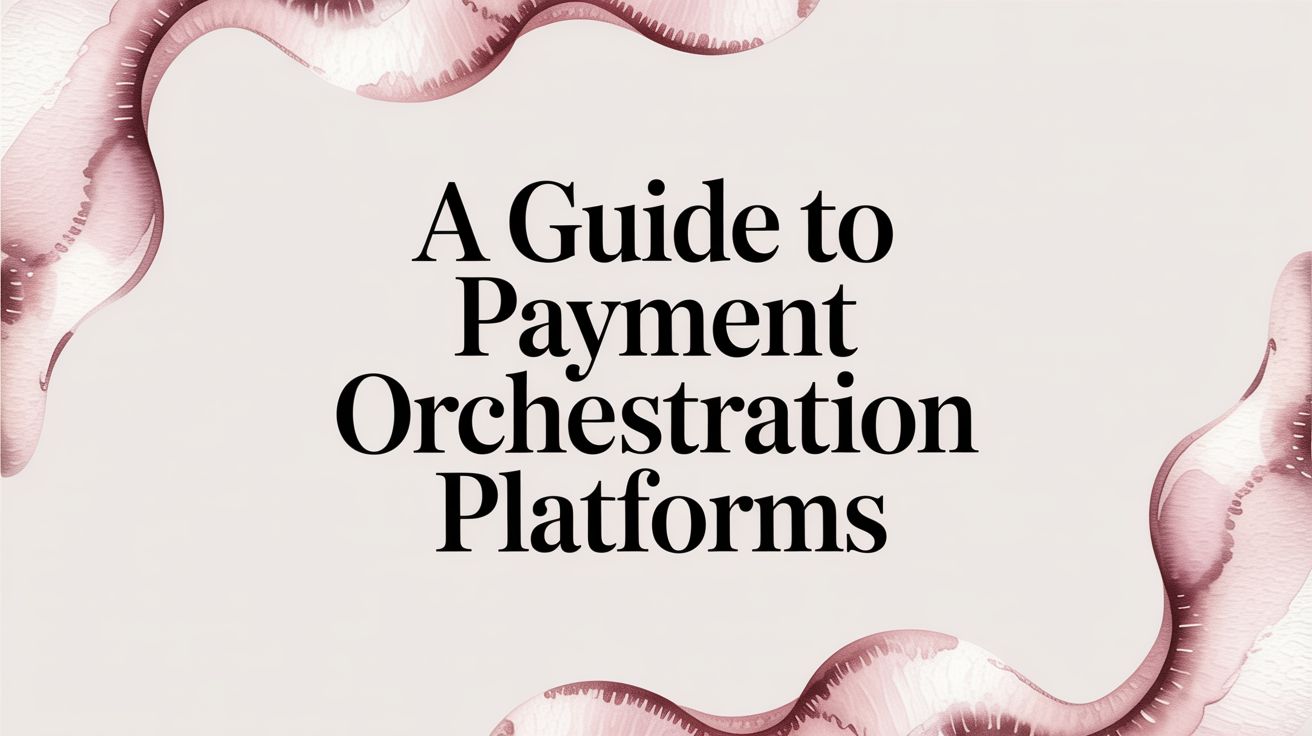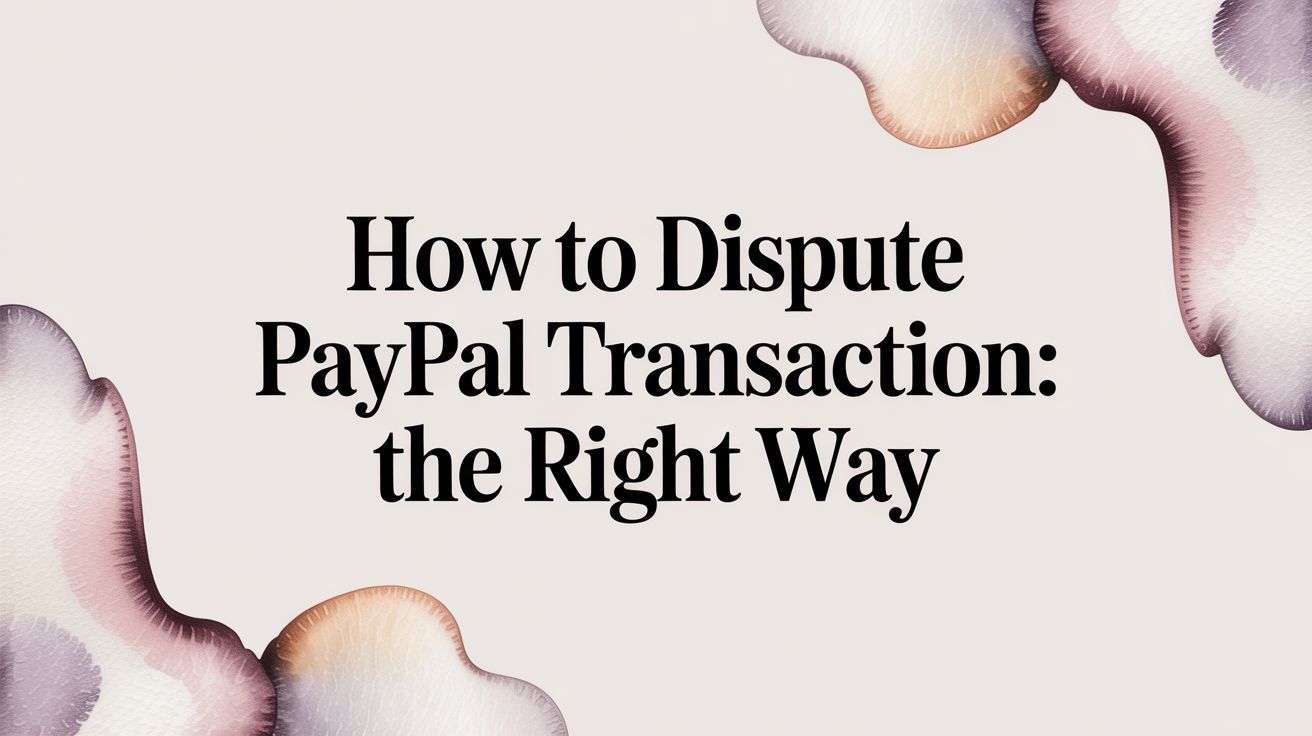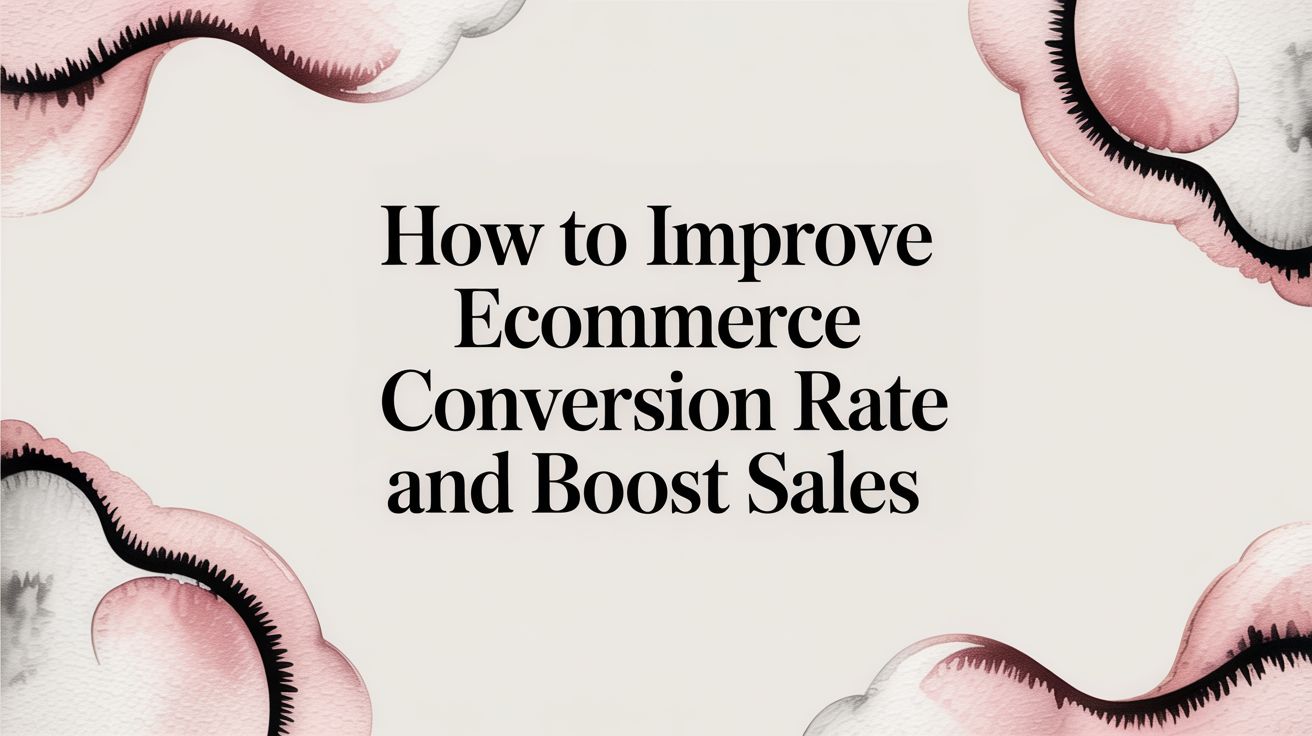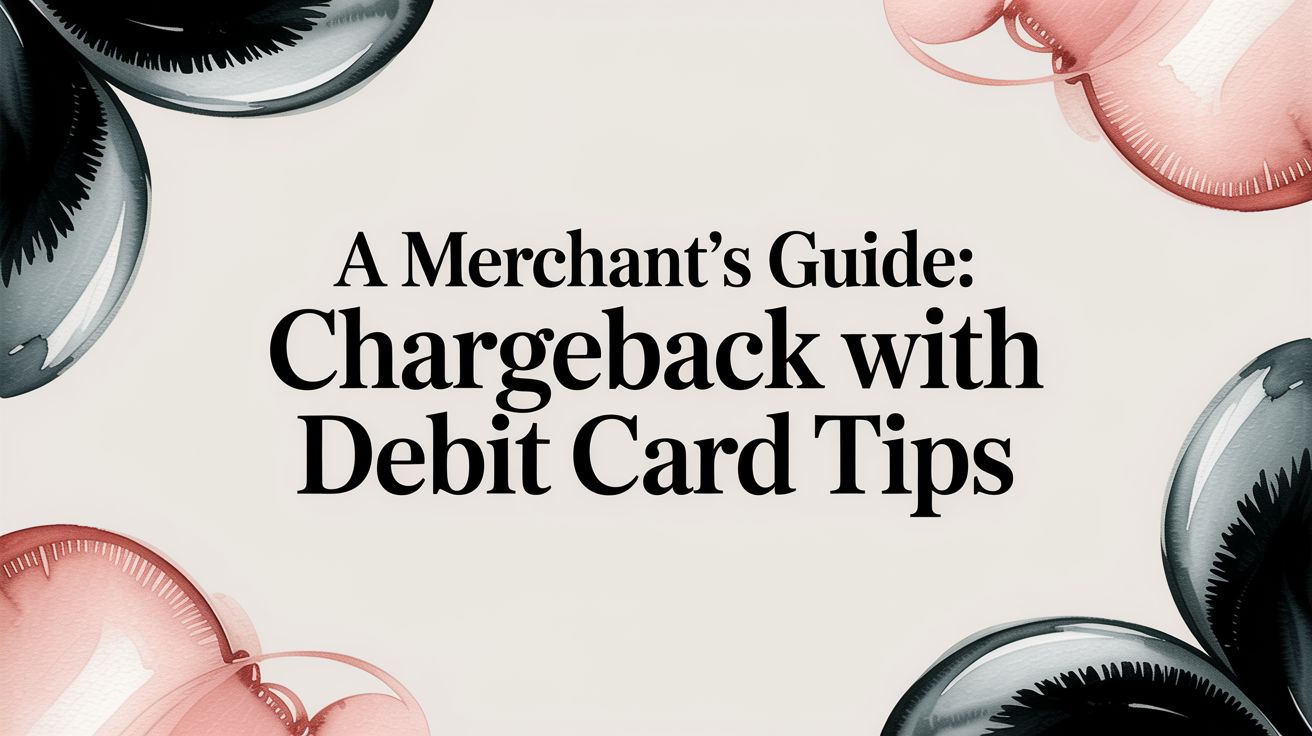
Think of your business as a world-class orchestra. Each way you let customers pay—credit cards, digital wallets, bank transfers—is a different instrument. A payment orchestration platform is the conductor, making sure every instrument plays in perfect harmony to create a flawless checkout experience.
What Is a Payment Orchestration Platform
At its core, a payment orchestration platform is a single layer of technology that plugs your business into a world of different payment services. Instead of building and maintaining a dozen separate, complicated integrations for each payment gateway or processor, you connect to just one central hub. This hub then manages all the downstream connections for you.
Imagine trying to individually manage ten different musicians, each with their own sheet music and schedule. It would be pure chaos. The conductor brings order by coordinating everyone from a single podium. Payment orchestration does the same for your payments, simplifying what would otherwise be a tangled mess of technical integrations.
Bringing Order to Payment Chaos
The main problem these platforms solve is complexity. The global payments world is incredibly fragmented. Different regions have their favorite payment methods, various providers offer better rates for certain transaction types, and trying to manage it all can quickly become a full-time job for your development team. You can dive deeper into the role of a single provider in our guide on what a payment processor is.
A payment orchestration platform acts as a universal translator and traffic controller for all of this. It lets you:
- Add new payment methods without having to write a single line of new code.
- Connect to multiple payment providers to build in redundancy and keep sales flowing.
- Expand into new countries and accept local currencies almost instantly.
- Cut down on operational headaches by managing everything from one dashboard.
By unifying a fragmented system, orchestration turns a complex challenge into a strategic advantage, allowing businesses to be more agile and customer-focused without the technical burden.
This approach isn't just a "nice-to-have" anymore; it's becoming essential as online commerce continues to explode. In 2023, the digital payments industry grew by 19%. It's no surprise that over half of merchants (53%) have already adopted orchestration platforms to integrate multiple gateways, which in turn helped them improve transaction approval rates by over 26%. You can find more insights on this trend and how orchestration is shaping the future of digital payments over at 360iResearch.
To make it even clearer, here’s a quick breakdown of the common pain points and how payment orchestration provides the solution.
Payment Orchestration at a Glance
Ultimately, payment orchestration is about taking back control. It lets you build the best possible payment stack for your specific business needs without getting bogged down in endless technical projects.
How Payment Orchestration Actually Works
So, how do these platforms manage to pull everything together behind the scenes? The easiest way to think about a payment orchestration platform is as the brain of your entire payments operation. At its core, the system is built on a few key components that work together to make incredibly complex processes feel simple.
It all kicks off with a single API integration. Instead of your dev team spending months plugging into different payment gateways one by one, they just need to connect to the orchestration platform. This one connection acts like a master key, unlocking a whole network of payment providers, digital wallets, and local payment methods all over the world.
This infographic gives a great visual of how a central hub connects your business to a world of payment options.

As you can see, the platform is the central conductor. It seamlessly connects you to all sorts of payment types—credit cards, digital wallets, bank transfers—without you having to build and maintain each connection individually.
The Smart Routing Engine
The real magic happens inside the smart routing engine. This isn't just a simple traffic cop; it's a sophisticated system that acts like a GPS for every single transaction, finding the best possible path in real time.
You get to set the rules based on what’s most important for your business. For instance, you could tell the engine to:
- Always send transactions through the provider with the lowest processing fees to cut down on costs.
- Route international payments to a gateway known for the highest approval rates in that specific country.
- Automatically switch to a backup provider if your main one is down, preventing lost sales during an outage.
This all happens in milliseconds. Your customer just experiences a smooth, instant checkout, but on the back end, the platform has already made a series of intelligent decisions to get that payment approved successfully and affordably.
Keeping Your Data Secure
Of course, juggling all this payment data demands top-tier security. Payment orchestration platforms are built with security at their foundation, which massively simplifies your compliance headaches. They manage sensitive customer information using tokenization, a process that swaps out real card details for a unique, non-sensitive placeholder called a token.
By managing the data connections and using advanced security methods, the platform ensures that sensitive payment information is handled safely and compliantly across all your different providers, giving both you and your customers peace of mind.
This means the raw, sensitive card data rarely—if ever—needs to touch your own systems. This dramatically shrinks your PCI compliance scope. If you want to dive deeper, you can learn more about what tokenization in payments is from our detailed guide.
Ultimately, the platform doesn't just centralize your payment connections; it centralizes your security and compliance efforts, too.
The Real-World Benefits for Your Business

So, beyond all the technical jargon, what does a payment orchestration platform actually do for your business? The answer is pretty straightforward: it transforms your payment system from a simple cost of doing business into a powerful engine for growth. It’s all about getting real, measurable results you can see in your bottom line.
One of the most immediate impacts is on your conversion rates. We've all been there—a customer's payment fails at the last second, and that sale is gone for good. Orchestration platforms tackle this head-on by smartly retrying failed transactions through a backup provider or letting the customer instantly switch to another payment method. That little bit of flexibility saves sales that would otherwise just vanish.
Boost Sales and Cut Costs
By offering a wider range of payment options, you’re meeting customers on their own terms. Someone in Germany might be looking for Sofort, while a shopper in the Netherlands expects to see iDEAL. A payment orchestration platform lets you add these local favorites with ease, which can make a huge difference in cutting down on abandoned carts.
This approach delivers a few key wins for your revenue:
- Higher Approval Rates: Smart routing is a game-changer. It sends every transaction to the gateway most likely to approve it, giving your success rate an instant lift.
- Reduced Cart Abandonment: Letting customers pay with the local methods they know and trust makes the checkout process feel seamless and secure.
- Saved Sales During Outages: If one of your payment providers hits a snag, the platform doesn't miss a beat. It automatically reroutes traffic to one that's working, so you don't lose revenue or frustrate customers.
But it’s not just about making more money—these platforms are also brilliant at saving it. They can automatically route payments to the provider with the lowest fees for that specific transaction. When you’re processing thousands of payments, those fractions of a percent add up to serious savings. Plus, you won't need a huge in-house dev team to juggle multiple payment integrations, freeing up your team to work on bigger things. These are just some of the core business process automation benefits that come from adopting smarter tech.
Simplify Global Expansion
Ever thought about selling internationally? Payment orchestration makes going global so much simpler. Instead of getting bogged down building custom integrations for every new country’s preferred payment methods, you can often just switch them on with a few clicks. This lets you test new markets fast and scale up without a massive upfront investment.
A payment orchestration platform essentially gives you a global payments infrastructure right out of the box. It removes the technical barriers, so you can focus on your market strategy, not your payment stack.
There's a reason the market for these platforms is exploding. Valued at roughly USD 1.89 billion in 2025, it’s projected to grow at a blistering pace of around 23% each year, hitting nearly USD 15 billion by 2035. This growth is largely fueled by the e-commerce boom in emerging markets. This trend really drives home how vital these platforms are becoming for any business serious about growth.
Must-Have Features in an Orchestration Platform
Picking a payment orchestration platform is a big deal, and let's be honest, not all of them are created equal. Once you get past the slick marketing, the real value is in the core features. Think of it like buying a car—you wouldn’t just look at the paint job, right? You’d check under the hood to make sure the engine can perform when you need it most.
A top-tier platform is more than just a payment gateway; it’s a toolkit designed to help you make more money, cut costs, and simplify your life. These aren't just flashy add-ons; they are the essential pieces that turn a decent payment setup into a truly powerful one. Knowing what to look for will help you cut through the noise and find the perfect fit.
Intelligent Transaction Routing
The heart and soul of any great orchestration platform is intelligent transaction routing. This is the magic that analyzes every single payment in real time and sends it down the best possible path. It's not just about having a backup plan; it's about making a smart, data-driven choice for every transaction to give it the highest chance of success.
This dynamic routing can be tweaked based on all sorts of factors, like:
- Lowest Cost: Automatically sending the transaction to the acquirer with the best processing fee.
- Highest Approval Rate: Directing a payment to the gateway that has a proven track record for that specific card type or country.
- Currency or Location: Using local processors for international sales to dodge cross-border fees and boost approval rates.
The ability to set your own custom routing rules gives you complete control. It turns a standard checkout process into a finely tuned engine for optimizing revenue.
Unified Dashboards and Analytics
Trying to manage payments across multiple providers can get messy—fast. That's why a unified reconciliation and reporting dashboard isn't just nice to have; it's a must. This feature pulls all your transaction data from every channel and provider into one single, easy-to-read view. No more logging into five different portals just to figure out what’s going on.
This single source of truth gives you the insights needed to make smart decisions. You can track approval rates, keep an eye on costs, and spot trends across different markets. Good reporting is also a huge deal for security, as it helps you spot weird patterns that could be a red flag for fraud. To get a better handle on this, check out our guide on essential transaction monitoring solutions.
Finally, don't overlook comprehensive tokenization. This security feature is your best friend for protecting customer data and slashing your PCI compliance workload. By swapping sensitive card details for a secure token, the platform makes sure that raw payment information never even touches your systems. That keeps both you and your customers safe.
Before you make a final decision, it helps to see how these core features stack up. A great payment orchestration platform isn't just a collection of tools; it's a cohesive system where each feature works together to support your business goals.
The table below breaks down the essential components you should be looking for. It explains not just what they are, but why they are so critical for scaling your operations, protecting your revenue, and keeping customers happy.
Essential Features of Payment Orchestration Platforms
Ultimately, the right platform will feel less like a tool you have to manage and more like a strategic partner. It should handle the complexity of the payment ecosystem behind the scenes, freeing you up to focus on what you do best: growing your business.
How to Choose the Right Platform for You
Picking a partner for your payment infrastructure is a huge decision. With so many payment orchestration platforms out there, finding the one that actually fits your business goals can feel like a chore. The secret is to look past the slick marketing and zero in on the practical details that will make a real difference to your daily operations and future growth.
Think of it like choosing a new headquarters for your business. You wouldn't just pick the building with the nicest lobby. You'd dig into its location, infrastructure, security, and whether it has room for your team to expand. The same thinking applies here. You need a platform that solves today's headaches but is also built to handle your vision for tomorrow.
Define Your Core Needs First
Before you even start window shopping for vendors, take a step back and map out exactly what you need. Every business is unique—what works for a global retail giant probably won't be the right fit for a subscription software startup.
Start by asking yourself a few basic questions:
- Where do you operate? Jot down all the current and future regions you plan to sell in. This will quickly tell you which platforms have the global reach and local payment methods you’ll need.
- How do your customers pay? Pinpoint the most popular payment methods for your audience. Are they all about digital wallets, bank transfers, or specific local options?
- What's your business model? Are you dealing with one-time sales, recurring subscriptions, or a mix of both? Your answer will determine how important features like tokenization and dunning management are.
Answering these questions first gives you a clear scorecard to judge potential providers against. This simple exercise keeps you from getting distracted by shiny features you'll never use and helps you focus on what really counts.
Critical Questions for Potential Vendors
Once you have a shortlist, it's time to get serious. The goal isn't just to understand what their technology does, but how they function as a partner. The Payment Orchestration Platform market is on track to hit around USD 13.4 billion by 2034, which means a lot more players will be jumping into the game. Asking the right questions is how you vet them properly. You can discover more insights about this growing market to get a sense of its direction.
Don’t just evaluate the platform; evaluate the provider. A great product backed by poor support or an inflexible contract can create more problems than it solves.
Here are some essential questions to have in your back pocket for those vendor calls:
- What does your network of partners look like? Ask for a complete list of their integrated payment gateways, acquirers, and fraud prevention tools. Make sure they cover your must-haves.
- Can you explain your pricing model in detail? You're looking for total transparency here. Are there hidden fees, setup costs, or long-term lock-ins? A simple, predictable pricing structure is always the better choice.
- How do you handle technical support? Get the specifics on their support channels (phone, email, chat), typical response times, and whether you’ll get a dedicated account manager. When your payments are on the line, you need help that’s fast and effective.
- How scalable is your solution? Talk about your growth plans and ask how their infrastructure handles sudden spikes in transaction volume. You need to be sure they can grow with you without skipping a beat.
Integrating Your New Payment Platform

So, you've picked out the perfect payment partner. The next logical question is, "How much of a headache will it be to get this thing running?" It’s easy to imagine a massive technical project, but with modern payment orchestration, the reality is a lot less daunting than you might think.
This isn't about ripping out your entire tech stack and starting from scratch. Your dev team will use a single API to hook into the orchestration layer. Think of it as a master key—that one connection opens up the platform’s entire network of gateways and services, simplifying your setup from day one.
Key Steps for a Smooth Launch
Once you're connected, the real work begins—and by "work," I mean configuring the platform to perfectly match your business needs. This is where you get to bring your payment strategy to life.
- Connect Your Gateways: Start by linking up your existing payment service providers (PSPs) and adding any new ones you plan to use. Most of this is done right from the platform’s dashboard, no heavy lifting required.
- Configure Routing Rules: This is the fun part. You get to set up the logic for your smart routing engine. You’ll tell it exactly how to handle different transactions to cut costs, boost success rates, or cater to regional preferences.
- Test Everything Thoroughly: Before flipping the switch, you'll want to run everything through a sandbox environment. This is a safe, isolated space to run test transactions, letting you iron out any kinks without touching real customers or live sales.
A well-managed integration is less about a massive technical overhaul and more about thoughtful configuration. The goal is to ensure your new system is perfectly tuned to your business before a single live transaction runs through it.
Best Practices for a Seamless Transition
Getting the tech right is only half the battle. Communication is what really smooths out the transition. Make sure your finance, customer support, and development teams are all in the loop so everyone knows what to expect and is ready for the switch.
A smart approach is to start small. Maybe route just a small percentage of your traffic through the new system at first. This lets you build confidence and address any unexpected issues with minimal risk before you go all-in.
Remember, integrating a powerful payment orchestration platform doesn't just change how you process payments—it can dramatically improve your entire customer journey. You can learn more about crafting that perfect final step in our guide to optimizing your checkout experience.
Still Have Questions About Payment Orchestration?
Even after getting the big picture, it’s totally normal to have a few questions rattling around about how a payment orchestration platform actually fits into your world. Let's clear up some of the most common ones and put those final puzzle pieces into place.
Getting these details straight will help you feel a lot more confident as you start looking at which solution is the right fit for your business.
Is It the Same as a Payment Gateway?
Not quite, though they're definitely related. Think of a payment gateway as a single service that processes your payments—like a Stripe or a PayPal. A payment orchestration platform is the layer that sits on top of all of them, letting you manage and direct traffic between multiple gateways through one central connection.
It's like the difference between a single musician and the conductor of an entire orchestra. The gateway is one instrument playing its part, while the orchestration platform is the conductor making sure every instrument plays together in harmony.
Are These Platforms Only for Big Companies?
That’s a common misconception. While huge enterprise companies were the first to jump on board, payment orchestration is now a massive advantage for small and medium-sized businesses (SMBs), too.
If you’re thinking about expanding internationally, want to shave down your transaction fees, or need to boost your payment success rates, an orchestration platform is a game-changer. It gives you the kind of power that was once only available to businesses with massive tech teams, but without the eye-watering cost.
How Does Orchestration Improve Security?
This is a big one. Payment orchestration platforms seriously upgrade your security by centralizing all your payment connections and making PCI compliance way simpler.
They use a technique called tokenization to protect sensitive card data, which means the raw, vulnerable information never even has to touch your servers. They also help you navigate the maze of international security rules (like GDPR in Europe) by intelligently routing transactions through providers that are compliant with specific regional laws. It's a much smarter and safer way to handle payments.
Ready to stop losing revenue to chargebacks? ChargePay uses AI to automate dispute resolution, recovering up to 80% of lost funds hands-free. Protect your revenue today.







.svg)







.svg)
.svg)
.svg)